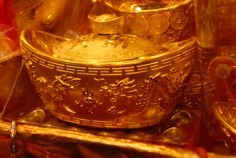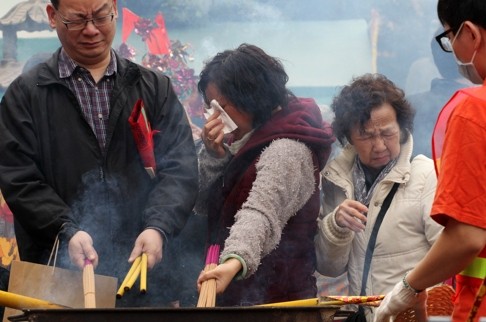
The myths of Chinese New Year explained
Wandering around Hong Kong offers a riot of red and gold, but what’s the meaning behind these things?
There’s no doubting that the stories at the core of Chinese New Year have had an enormous effect on the civilisation. The 12-year cycle zodiac is a more than 4,700-year-old method of marking time, and while some of the stories are meant for children others show a sense of creative wordplay and compassion for others so as to give important life lessons.
What’s it all about?
The Chinese New Year story is about saying goodbye to the year and marking time. It was integral to farming and planning annual events. There are a couple of stories that are more common depending on where in the Sinosphere you look.
One story of CNY is about the start of time, and gives a narrative to why cats hate rats. According to legend, the Jade Emperor decided to segment time into cycles of 12 years, so he devised a race among the animals. In the race, the animals had to cross a river to the finish, so the rat and the cat asked the strong ox to give them a ride across the fast water. But the cunning rat betrayed the cat, pushing her into the water and riding the ox to the other side, only to jump off and race to the finish line for first place. The ox followed and the rest is, sort of, history.
This coming cycle we will switch from the ram/goat/sheep to the ninth zodiac year of the monkey. In that time the year takes on the characteristics of the monkey, according to the mythology. So expect tricks and turns from the cunning animal spirit.
WATCH: The Chinese zodiac story
But there’s another story, not widely told in Hong Kong but illuminating to the traditions of the holiday, especially fireworks, the colour red and lion dances.
There was a beast named Nian who would hide for a year and raid villages at the time of the lunar new year. Nian, a lion-headed bull often represented by lion dancers, has an Achilles heel – he’s afraid of loud noises, fire and the colour red. Strings of firecrackers popping off in the street were meant to ward off Nian’s return each year. Not incidentally, nian means both year and grain and the story incorporates giving charity to those less fortunate, and sending off the old year with a bang.
WATCH: The Nian story, animated
Get around the guide:
The imagery and the iconography of CNY
Monkeys – It’s now the ninth year of the 12-year zodiac, the Year of the Monkey.

Kumquats, tangerines and oranges – Kumquat bushes are popping up in building foyers all over Hong Kong; the Cantonese words for orange or tangerine sound like luck and wealth and are popular for CNY.
WATCH: HKU sociologist explains the common sights of CNY
— SCMP video by Vicky Feng, Robin Fall and Bernice Chan
Red things – from lanterns to underpants, the colour red is the favoured shade for the holiday and relates to the story of Nian, a mythic beast who terrorised villages but was afraid of the colour red.
Lanterns – Not just a canvas for more red colour, at the end of CNY wishes were once attached to flaming lanterns which floated up into the sky. In places other than Hong Kong this practice is said so continue.
Cut-out paper sheets – businesses are coated with lacy sheets of paper that have been cut up; this is an old tradition popular at CNY.
Calligraphy – Hong Kong still has a few bespoke calligraphers who will hand-write messages called fai chun to encourage good fortune; they can be found in Mong Kok, on Johnston Road in Wan Chai, in Sheung Wan near the Man Mo Temple and at Victoria Park at the annual market.

The concept of luck
Luck is a concept lost in translation from Cantonese to English. While the Western concept of luck is purely based on chance, Hong Kong University school of Chinese professor Isaac Yue said the concept is a lot more like destiny. When people pray at CNY they are sometime seeking power to stay on the path they are meant to take through life. Luck in the concept of “ho won” or “so won” can go both ways and good fortune must be earned. Today’s Hongkonger has blended the old concept with the Western one, so for some the fortunes they seek are unwritten.
Get around the guide:




